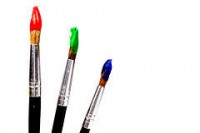7 Key Tips for Designing a Great Logo

What makes a great logo? What are the basic principles and best practise that one should adhere to? There’s a lot of different opinions on what makes a great logo design. To help you navigate the whole area, we’ve compiled a list of our top 7 tips to consider when designing your new logo.
1. Simplicity
As the saying goes “less is more”, so avoid overly complicated or highly detailed logo devices where possible. A simple, clear execution that reproduces well in all applications and formats is always preferable. A logo is an emblem and not a sales brochure – that means if you ask it to do too much it will ultimately fail in its primary function. If you’re lucky and succeed in creating something really distinctive, then it may be possible for the icon/logo device to be used without any type i.e. your audience recognise your company by its logo icon alone. Think of McDonalds golden arches, the Nike swoosh or the Adidas stripes.
2. Avoid following trends
A good logo will stand the test of time. Following the herd and copying the style of the day will leave you with a logo that dates far quicker that it should. Gimmicky typefaces, “cool” effects or cutting-edge design might be ok for a design agency but most likely not for your businesses. Controversial design may win awards but it usually only appeals to a minority and therefore alienates the majority. Your logo must seek to be both inclusive and appropriate in terms of its look and feel for your target audience.
3. Versatility is key
In its lifetime your logo may need to be used on websites, brochures, signage, clothing, cards, billboards or promotional products. That’s no small task. How will your logo look in single colour? How will it scale down? How will it embroider? How will it look on screen? How will it look on a solid background? Being versatile and creating primary and secondary versions of your logo will keep your brand looking its best no matter where it’s encountered.
4. Be Different
It sounds like an obvious goal for a logo but more often than not we fall into the trap of mirroring our competition, crediting them with some insight into logo design that they don’t deserve. This is where the skills of a professional creative are invaluable. The ability to combine sound branding logic with fresh creative ideas will be what makes you logo into a real winner. Be willing to invest in good design. It’s not a service you should select based on lowest price or quickest turnaround – in most instances you get what you pay for (or don’t pay for!!)
5. Tell a story
What does your logo say about your company? Is it simply a one dimensional design with no logical or emotional link to what you do? Does its design execution work on something more than just a superficial level? Does it credit the viewer with a level of intelligence that may be required to “get” the logo and its deeper meaning? That doesn’t mean you set out to be deliberately vague of overly clever, just that you put some thought into the various elements of the design and how it fits with your business. It could be a compelling slogan or a logo device with a clever twist. Endeavour to create a hidden/second meaning to compliment the more obvious one on the surface?
6. Easy to remember
Remember when Royal Mail rebranded themselves as Consignia at a cost of 1.5 million pounds? Only to revert back to Royal Mail soon after for an additional cost of another million pounds. Why? Simply because the swooped a brand that the public could remember for one they pretty much couldn’t. The lesson being that obscure titles and/or complex logos make life hard for your customers. Keep it snappy, succinct and relevant and you’ll be rewarded with increased brand awareness.
7. Always employ a PRO
You wouldn’t fix you own car so why is it that so many of us think we are a dab hand at logo design? Rule No. 1 – only employ an experienced design professional and when you do, don’t attempt to do their job for them. As the old adage goes…”If you have a dog, let it bark”. By all means give the designer a detailed brief and as much insight as possible but leave it at that. Remember there’s a huge difference between mere opinion and actual expertise.
photo credit: <a href=”http://www.flickr.com/photos/horatiu-curutiu/3402069345/”>Horatiu Curutiu</a> via <a href=”http://photopin.com”>photopin</a> <a href=”http://creativecommons.org/licenses/by-nc/2.0/”>cc</a>

